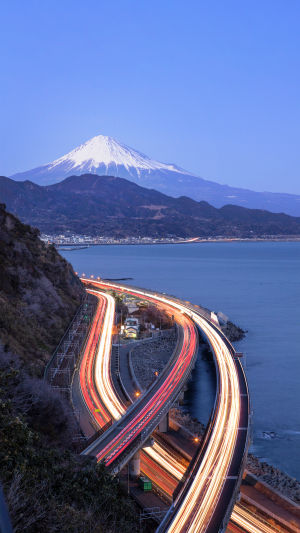Japan is a country that is known for its natural beauty, culture, and rich history. However, Japan is also a country that is prone to natural disasters, particularly volcanic eruptions.
One of the most well-known and iconic volcanoes in Japan is Mount Fuji, located on Honshu Island. With the recent eruption of the Sakurajima volcano, concerns have been raised about the possibility of an eruption of Mount Fuji, which last erupted in 1707.
According to the Earthquake Research Institute of the University of Tokyo, the cycle of Mount Fuji's eruption is around once in 300 years, and it has erupted 17 times since the eighth century A.D.
The last eruption was in 1707, which means that over 300 years have passed since the last eruption. Based on several studies conducted by geologists in Japan, it is highly likely that Mount Fuji will erupt again in the next few years.
In recent years, the eruption of the Sakurajima volcano has increased by six times compared to the past. Kagoshima Prefecture, where the volcano is located, is frequently covered with smoke and ash that can reach heights of up to 3,000 meters.
The eruption of Mount Fuji would be much more catastrophic, as it would affect the entire Tokyo area, which has a population of over 40 million people. The Japanese government panel has warned that any major eruption of Mount Fuji would bring so much ash to the capital, Tokyo, that its train and highway transportation network would be paralyzed within three hours.
Japan is a country of many earthquakes, which is mainly due to its location. The Japanese islands are located underneath the Pacific plate, the Philippine plate, and the Eurasian continental plate, which makes them prone to earthquakes. This also means that the underground of the Japanese islands is filled with intense volcanoes, which have made Japan the world's largest hot spring country.
However, it also means that many parts of Japan are resting on fire, and the country has 110 active volcanoes, which account for 7% of the world's active volcanoes despite Japan's area only making up 1% of the world's land mass.
The Japan Volcano Disaster Prevention and Countermeasures Association has observed a steep increase in the number of vents on Mount Fuji, from 44 to 252 since 2021. Furthermore, earthquakes have been occurring around Mount Fuji, causing concerns that an eruption may occur soon.
Before a volcano erupts, there may not be any visible changes on the surface, but magma is constantly moving underground and may appear as a harbinger months before the eruption occurs.
Before the eruption, a visible dome will appear on the side of the volcano, and the higher the dome, the more severe the eruption is likely to be. However, the time of eruption cannot be accurately predicted from the dome.
Aside from monitoring the physical changes on Mount Fuji, animals can also provide some indication of an impending eruption. According to experts from Colima University, small animals are more sensitive than humans and can exhibit cranky and restless emotions before an earthquake.
While this may not be a foolproof method of predicting an eruption, it can serve as a useful tool in conjunction with other monitoring methods.
The possibility of an eruption of Mount Fuji is a cause for concern in Japan, given the catastrophic effects it would have on the Tokyo area.
The Japanese government and scientific community are closely monitoring the volcano's activity and physical changes, as well as paying attention to any potential signs of an eruption. It is important to stay informed and prepared for natural disasters, as they can strike at any time, and the consequences can be severe.





